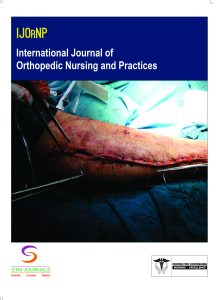
Danababy,

Regina P.F.,

Aswani B.,
- Assistant Professor Nehru College of Nursing Kerala India
- Associate Professor Nehru College of Nursing Kerala India
- Assistant Professor Nehru College of Nursing Kerala India
Abstract
Abstract
Tennis Elbow, clinically termed lateral epicondylitis, stands as a prevalent musculoskeletal ailment affecting the outer part of the elbow. Despite its name, this condition isn’t exclusive to tennis players; it often arises due to repetitive stress or overuse of the forearm muscles and tendons, leading to micro-tears and inflammation at the elbow’s lateral epicondyle. The abstract focuses on elucidating the multifaceted aspects of Tennis Elbow, exploring its causes, symptoms, and the array of treatment options available. Symptoms commonly appear as discomfort and sensitivity around the outer elbow, sometimes extending down the forearm. While common among individuals in professions involving repetitive arm movements, it can also affect those with specific hobbies or activities emphasizing similar motions. The diagnosis mainly depends on a clinical assessment and review of the patient’s medical background. In some cases, imaging tests could help confirm the diagnosis or eliminate other potential sources of elbow discomfort. Treatment approaches for Tennis Elbow vary from conservative to more involved interventions. Initially, conservative approaches, including rest, ice application, and modification of activities, serve as foundational components. Additionally, physiotherapy exercises aimed at strengthening and stretching the affected tendons and muscles offer considerable relief. Orthotic devices, such as elbow braces, might assist in mitigating strain during daily activities. For cases resistant to conservative treatments, medical interventions such as corticosteroid injections or platelet-rich plasma therapy may be considered to alleviate pain and promote healing. In rare instances where symptoms persist significantly, surgical procedures, like tendon repair, could be explored. The abstract seeks to provide a comprehensive understanding of Tennis Elbow, emphasizing the importance of early recognition, appropriate diagnostics, and tailored treatment plans. Educating individuals about preventive measures, proper techniques during physical activities, and ergonomic practices holds significance in managing and preventing the recurrence of Tennis Elbow, ultimately enhancing the overall quality of life.
Keywords: Tennis elbow, symptoms, causes, treatment, rehabilitation
[This article belongs to International Journal of Orthopedic Nursing and Practices(ijornp)]
References
Maheswari J. Essential Orthopaedics. 3rd edition. New Delhi: Mehta Publisher; 2003. p. 257.
Allander E. Prevalence, incidence, and remission rates of some common rheumatic diseases or syndromes. Scand J Rheumatol. 1974;3(3):145–53. doi: 10.3109/03009747409097141.
Chard MD, Hazleman BL. Tennis elbow – A reappraisal. Rheumatology. 1989;28(3):186–90. doi: 10.1093/rheumatology/28.3.186.
Verhaar JA. Tennis elbow. Anatomical, epidemiological and therapeutic aspects. Int Orthop. 1994;18(5):263–7. doi: 10.1007/BF00180221.
Labelle H, Guibert R, Joncas J, Newman N, Fallaha M, Rivard CH. Lack of scientific evidence for the treatment of lateral epicondylitis of the elbow. An attempted meta-analysis. J Bone Joint Surg Br. 1992;74(5):646–51. doi: 10.1302/0301-620X.74B5.1388172.
Bisset L, Beller E, Jull G, Brooks P, Darnell R, Vicenzino B. Mobilisation with movement and exercise, corticosteroid injection, or wait and see for tennis elbow: randomised trial. BMJ. 2006;333(7575):939. doi: 10.1136/bmj.38961.584653.AE.
Smidt N, van der Windt DA, Assendelft WJ, Devillé WL, Korthals-de Bos IB, Bouter LM. Corticosteroid injections, physiotherapy, or a wait-and-see policy for lateral epicondylitis: a randomised controlled trial. Lancet. 2002;359(9307):657–62. doi: 10.1016/S0140-6736(02)07811-X.
Buchanan BK, Varacallo M. Lateral Epicondylitis (Tennis Elbow). Treasure Island (FL): StatPearls Publishing; 2023.
Nirschl RP, Pettrone FA. Tennis elbow. The surgical treatment of lateral epicondylitis. J Bone Joint Surg Am. 1979 Sep;61(6A):832–9. doi: 10.2106/00004623-197961060-00005.
Hassebrock JD, Patel KA, Makovicka JL, Chung AS, Tummala SV, Hydrick TC et al. Elbow injuries in National Collegiate Athletic Association athletes: A 5-season epidemiological study. Orthop J Sports Med. 2019 Aug 8;7(8):2325967119861959. doi: 10.1177/2325967119861959.
| Volume | 01 |
| Issue | 02 |
| Received | December 22, 2023 |
| Accepted | December 28, 2023 |
| Published | January 9, 2024 |


